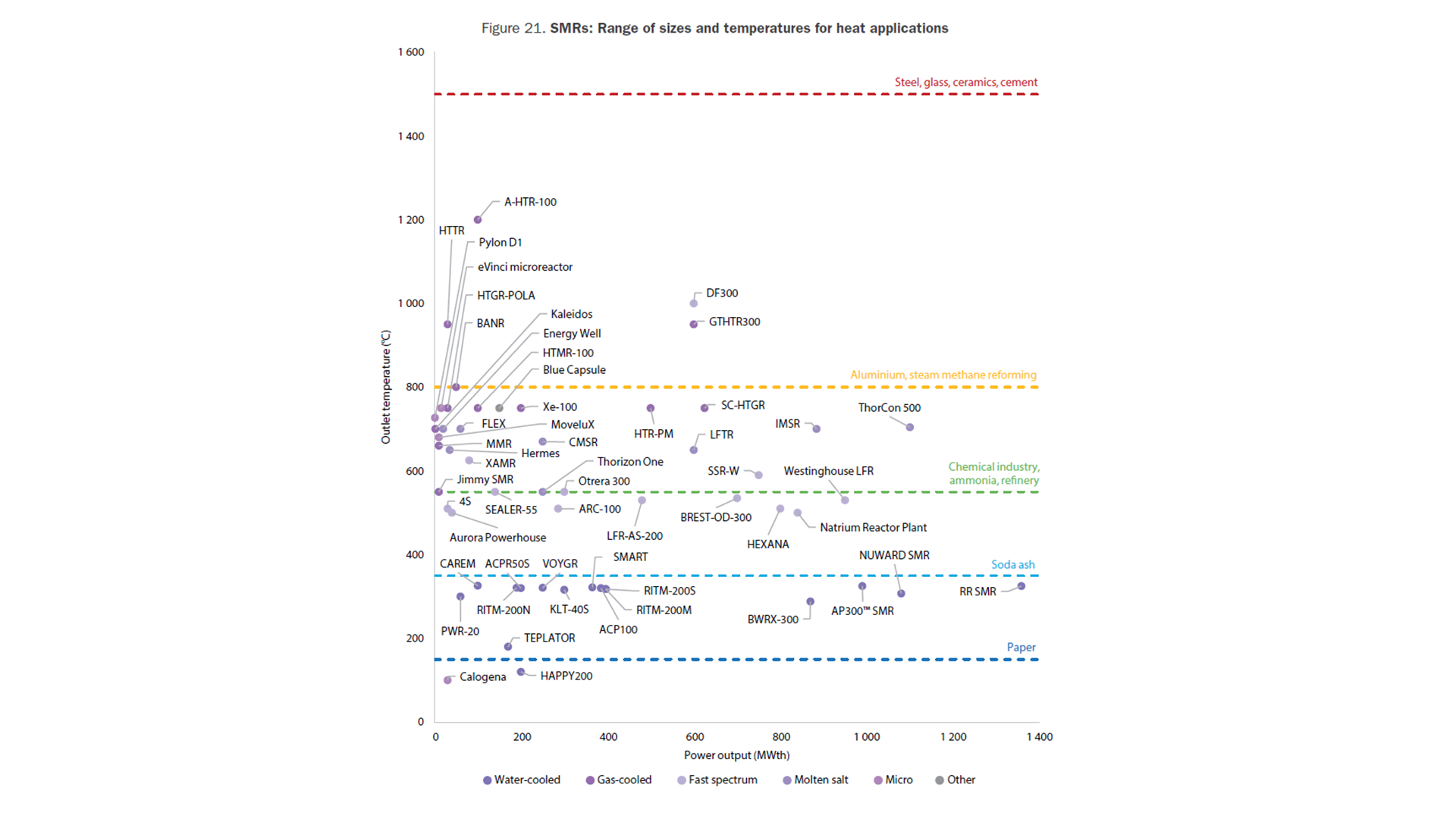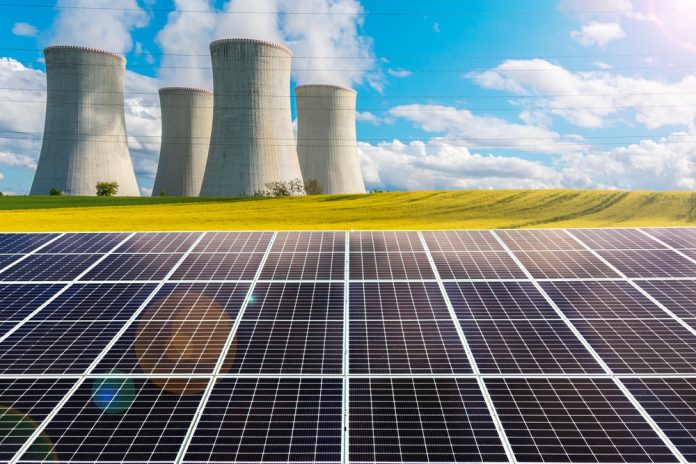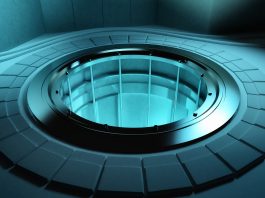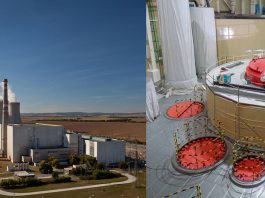The European Nuclear Society (ENS) explores how nuclear energy can drive global sustainable development by providing clean, low-carbon energy solutions and decarbonising key industries.
As the world grapples with the urgent need to address climate change, the focus on achieving Net-Zero emissions by 2050 has become a critical topic across the globe. However, finding the sweet spot between decreasing the emissivity of economies and continuously fostering development in all world regions gives policymakers a headache.
Particular attention has been paid to decarbonising the electricity and heat generation sector, which currently accounts for around 44% of global emissions. Access to large amounts of different forms of affordable and clean energy is a foundation of sustainable development worldwide, with all the 17 UN Sustainable Development Goals being directly or indirectly dependent on it.1,2
Electricity: The base
Electricity plays a crucial role in energy transition, as a current contributor of over 40% of energy-related emissions, with mitigation path by replacement of fossil power plants with nuclear and renewable sources. Moreover, some sectors of human activity – part of transportation, HVAC, industry and agriculture – are shifting to electrification, driving higher electricity demand. Finally, the digital and AI sectors create a rapidly growing supplementary demand for stable electricity production.
Nuclear electricity, with its stable, baseload, dispatchable profile, is particularly interesting for the provision of large amounts of electricity and support of electrification via large reactors as well as ensuring electricity access for specific locations, like remote communities or mining sites, via small or micro reactors (SMRs and MMRs).3

Beyond that, nuclear reactors can serve multi-purpose uses – generating heat for district heating or industry, hydrogen, and potable water, in parallel with or without electricity production, presenting enhanced efficiency (up to over 80%).
Non-electric applications: Water desalination
Water desalination using nuclear power plants has been demonstrated as affordable and technically viable. Coastal nuclear power plants combined with processes like reverse osmosis can treat seawater efficiently. Large-scale reverse osmosis desalination plants (up to 400,000 m³ per day, needing an energy supply of 3.5-4.5 kWh/m³) are typically developed independently of their power source and connected to the grid for electricity. However, direct connection with Small Modular Reactors (SMRs) can prove economically viable, with the indicative process costs on the level of fossil-powered plants.
By now, the nuclear industry accumulated over 150 reactor years of experience in nuclear-powered desalination, mainly in nuclear power plants in Kazakhstan, Japan and India and more facilities are planned, like Egypt, South Africa and others.4
Non-electric applications: Hydrogen
Pilot projects have already seen nuclear-powered hydrogen production via low-temperature electrolysers (a mature technology), which has the potential for scaling up with the current fleet. Although hydrogen production is usually considered a non-electric application (its final product is not electricity), it does not alter the basic design of the power plant since only electricity is needed by electrolysers, with conversion rates between 50 and 55 kWh per kilogram of hydrogen produced. This means that an average nuclear power plant could support a gigawatt-scale electrolyser plant, generating between 120 to 160 kilotons of hydrogen annually (chiefly depending on the availability factor of the power plant). This is to be compared to the EU’s target of producing 10,000 ktH2/y domestically. Hydrogen also serves as a building block for creating synthetic fuels.
Further potential nuclear applications include hydrogen production via high-temperature electrolysers (technology under development). This technology uses steam and electricity in combination to enhance process efficiency. Since this reaction is exothermic, the process heat required does not need to be very high and can be sustained by the reaction itself.
Non-electric applications: Maritime transportation
Container ships deliver around 90% of all goods globally. Shipping, in particular, accounts for about 3% of global GHG emissions, with its 53,000 merchant vessels consuming 6% of the world’s oil production annually. If the global shipping industry were a country, it would be the sixth largest emitter of CO2 globally.5 These emissions are also expected to rise by 20 to 250% by 2050 in comparison with 2012 values, both because of difficulties in decarbonising this sector and fleet expansion.6 Despite the challenges, studies estimated that every $1 invested in the decarbonisation of shipping has the potential to generate returns and co-benefits 2 to 5 times greater by facilitating sustainable and low-carbon trading activities and protecting the ocean from further acidification.
Nuclear technologies may offer viable pathways, both directly and indirectly, like via electrification, powering board ships in batteries or with on-board MMRs or SMRs. That’s the case of countries like the US, South Korea, and Denmark, which are working on compact molten salt reactors (MSRs) to power ships as well as market offshore power plants. Alternative applications include the use of low or zero-emissions fuels from nuclear production, like the above-mentioned green hydrogen, green ammonia or methanol.7

The maritime sector can also help accelerate the streamlined deployment of power plants via so-called floating NPPs, which greatly reduce construction costs and centralise manufacturing, refuelling and decommissioning. In January 2023, Samsung Heavy Industries (SHI) and Korea Atomic Energy Research Institute (KAERI) completed a conceptual design for the CMSR Power Barge – a floating nuclear power plant based on MSR technology. The design of between 200 MWe and 800 MWe, developed by Danish company Seaborg Technologies, would have an operational lifetime of 24 years. SHI plans to commercialise the CMSR Power Barge by 2028.8

Non-electric applications: District heating
Nuclear-powered district heating (up to 110°C) is currently implemented in areas adjacent to NPPs, in countries like Russia, China, and European countries like Switzerland, Czech Republic and others, typically in 10-15km range from the power plant, although longer pipelines are now also in construction. The facilities are working in co-generation to present a business case (limited power in summer, peaking at ten times in cold winters), which boosts overall plant efficiency with minimal investment and technical challenges. Additionally, several simple designs of SMRs are emerging to support this particular application in the future.
Non-electric applications: Steam for industry
The supply of high-temperature steam (limited technologically to 500-600°C) caters to industries like ammonia/fertiliser production, soda ash, oil refineries, petrochemical clusters, and pulp & paper. SMRs are among the few viable low-carbon solutions for these needs.9 On June 2024, China announced a new nuclear-based steam generation project beginning production. The Heqi No. 1 project at the Tianwan NPP started producing steam to be used by a petrochemical operation in the port city of Lianyungang. The project could deliver 4.8 million tonnes of steam annually through a 23.3km above-ground pipeline linking the nuclear facility and the industry base. By switching from coal to nuclear power, Heqi No 1 is estimated to save 400,000 tons of coal from being burnt, so potentially cutting over a million tonnes of carbon dioxide.10
Harnessing nuclear power for a sustainable future
Nuclear energy plays a critical role in achieving global sustainable development goals, offering clean, low-carbon, and scalable electricity.
Beyond power generation, nuclear technologies contribute to decarbonising industries like transportation, heating, and hydrogen production, enhancing efficiency while reducing emissions. As global electricity demand rises, driven by electrification and digitalisation, nuclear energy is increasingly seen as a reliable solution or a promising opportunity for several sectors. Despite several challenges still to overcome (e.g. developing regulatory frameworks and engaging with local communities), the expansion of innovative projects, like SMRs, further highlights nuclear’s potential to address climate challenges while ensuring energy security.
References
- Sustainable Development Goals (SDGs) is a UN project under the auspices of UN Secretary General, with the current horizon of 2030, represent a full spectrum of building a more equitable, prosperous, and environmentally sustainable world. These 17 interconnected objectives, cover everything from eliminating poverty and hunger to ensuring clean water, affordable energy, and climate action.
- Figure 1 – IAEA, Nuclear Power for Sustainable Development, 2017, https://www.iaea.org/sites/default/files/np-sustainable-development.pdf
- IAEA, Advances in Small Modular Reactor Technology Developments, 2022, https://aris.iaea.org/publications/SMR_booklet_2022.pdf
- World Nuclear Association, Non power nuclear applications: Desalination, Updated 2 May 2024, https://world-nuclear.org/information-library/non-power-nuclear-applications/industry/nuclear-desalination#desalination-nuclear-experience-and-plans
- World Nuclear Association, Nuclear-Powered Ships – Future Prospects, Updated 15 Feb. 2023, https://world-nuclear.org/information-library/non-power-nuclear-applications/transport/nuclear-powered-ships#future-prospects
- Rupsha Bhattacharyya, Rami S. El-Emam, Farrukh Khalid, Climate action for the shipping industry: Some perspectives on the role of nuclear power in maritime decarbonisation, e-Prime – Advances in Electrical Engineering, Electronics and Energy, Volume 4, 2023
- Figure 2 – R. Bhattacharyya, R. S. El-Emam, F. Khalid, Climate action for the shipping industry, 2023
- World Nuclear News, Samsung completes design of CMSR Power Barge, https://www.world-nuclear-news.org/Articles/Samsung-completes-design-of-CMSR-Power-Barge, 4 January 2023
- Figure 3 – OECD Nuclear Energy Agency, The NEA Small Modular Reactor Dashboard: Second Edition, https://www.oecd-nea.org/jcms/pl_90816/the-nea-small-modular-reactor-dashboard-second-edition
- Ameya Paleja, China turns on nuclear-powered 5-million-ton industrial steam generator, Interesting Engineering, 21 June 2024









